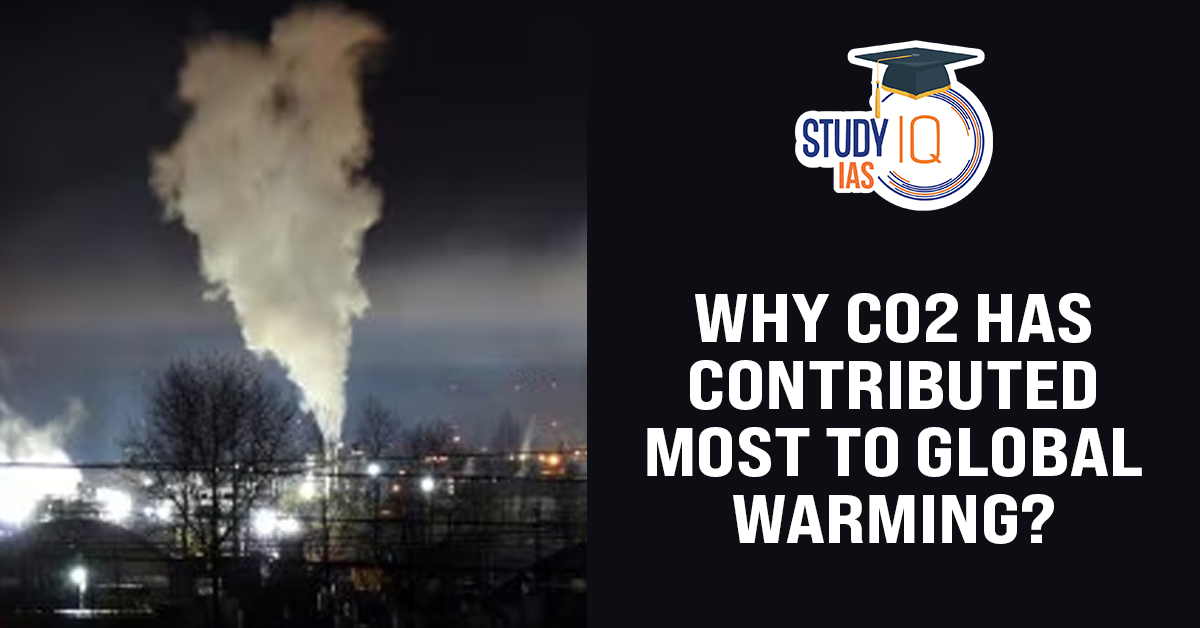Table of Contents
About Green house gases (GHGs)
- GHGs are gases in the Earth’s atmosphere that trap heat and contribute to global warming and climate change.
- They absorb infrared radiation from the sun and re-emit it in all directions, warming the Earth’s surface and lower atmosphere. This process is called the greenhouse effect.
- Common GHGs: Water Vapour, CO2, Methane (CH4), Nitrous Oxide, Hydroflurocarbons (HFCs)
CO2 causing most of the global warming
- CO2 is responsible for around 70% of global warming. It has had the highest radiative forcing (RF) or warming effect among major climate drivers.
- It is much more abundant in the atmosphere compared to CH4 and HFCs.
- Since the Industrial Revolution, CO2 levels have increased by 50%, which means CO2 concentrations are now 150% of their pre-industrial levels.
- CO2 remains in the atmosphere longer than the other major GHGs emitted due to human activities.
- Other potent GHGs like CH4 and Hydrofluorocarbons (HFCs) are more powerful in trapping heat (CH4 is 80 times more powerful than CO2), but CO2 dominates due to its abundance and persistence in the atmosphere.


 National Project for Strengthening Disas...
National Project for Strengthening Disas...
 CAG Report on Pradhan Mantri Kaushal Vik...
CAG Report on Pradhan Mantri Kaushal Vik...
 NITI Aayog Report on Public R&D Inst...
NITI Aayog Report on Public R&D Inst...

























